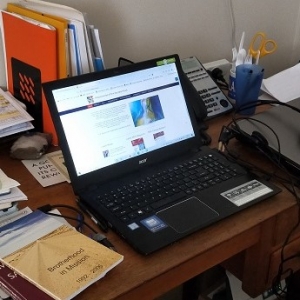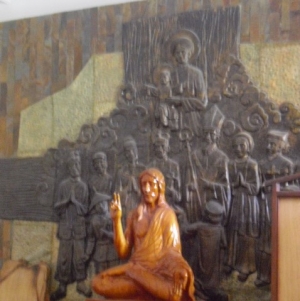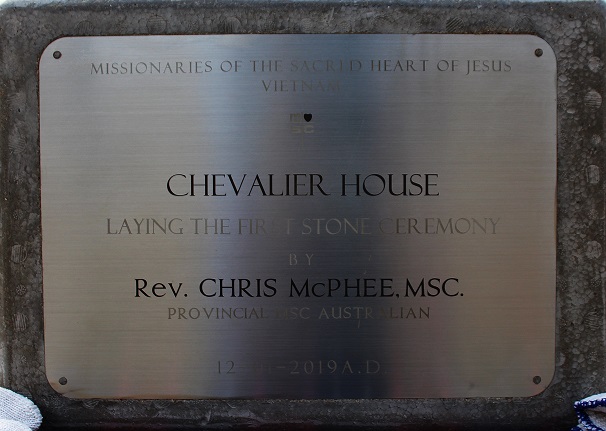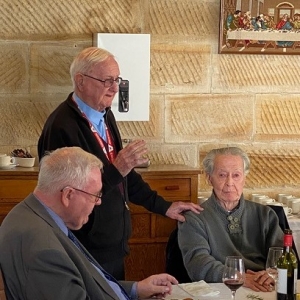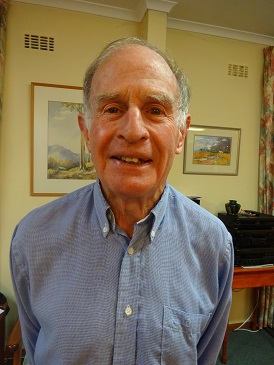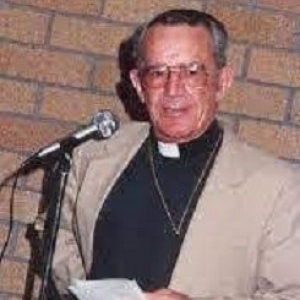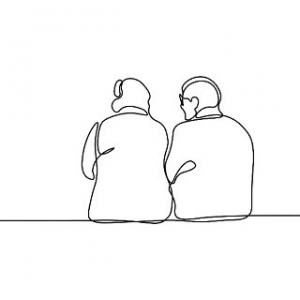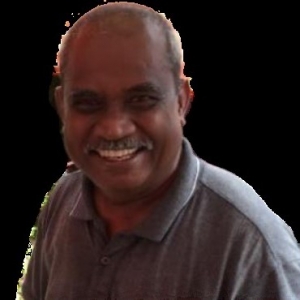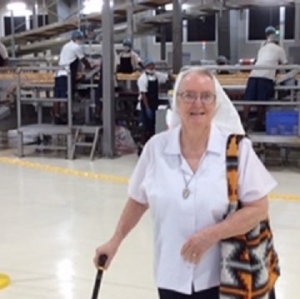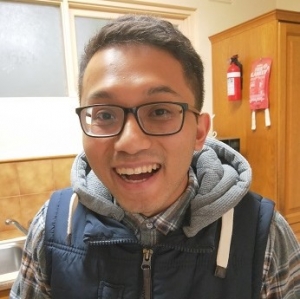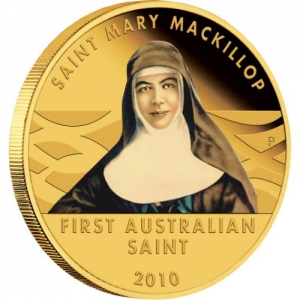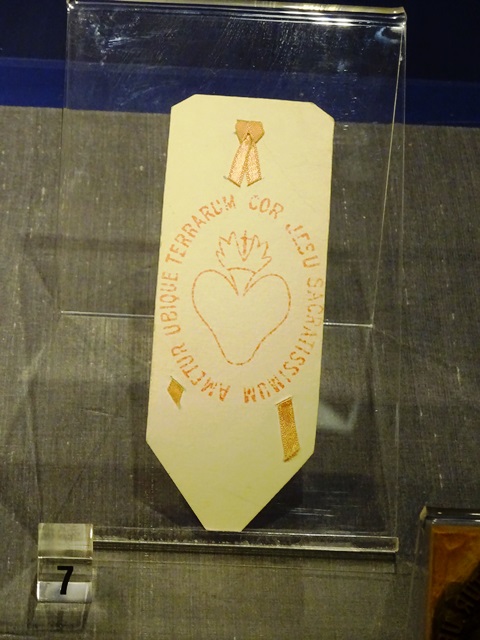Peter MALONE
Our Province Website, an anniversary
Our Province Website, an anniversary
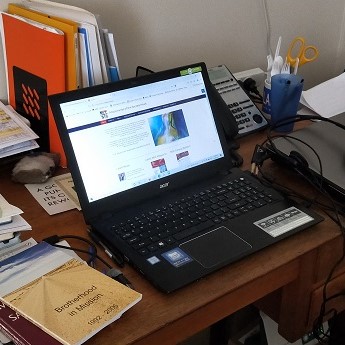
A memory jog. The current postings on the Province site began 11 years ago, August 17th 2010 when the then Provincial, Tim Brennan, persuaded the editor to try out the procedure for posting – and then declared that done once, it could be continued. And it has, 6 posts a week. This posting is number 3739 (which means that there is a large archive in cyberspace). The photo is of the desk where it all happens each night, 10 pm, Phillip Addams on Late Night, It's God Forbid on Sunday nights!
You might be interested in some statistics on our reach from last week’s postings, number of site hits and Facebook responses and comments:
Monday: Daniel Magadia’s Formation Reflection: 384. Hits; Facebook likes and loves: 17, 3 comments and 2 shares.
Tuesday: Sister Helen Warman OLSH: 411 hits; Facebook likes and loves, 30, 4 comments and 10 shares.
Wednesday: Kiribati Br Kaake Joane MSC story: 328 hits; Facebook likes and loves, 17 and 2 shares.
Thursday: Article on atheists and god-cancellers: 151 hits; Facebook likes and loves, 10, 1 comment and 1 share.
Friday: St Paul’s Late Vocation Seminary: 206 hits, 24 Facebook likes and loves,2comments.
Saturday-Sunday: Golden Jubilee of Prieshood: 170 hits, 16 Facebook likes and loves,
Actually, these statistics are higher than in the average week. But, we continue to hope that we attract more visitors – from our parishes, from our college staffs, from MSC relatives and friends.
And a word of thanks to those who send in stories or send in alerts, especially from Vietnam and from Malcolm Fyfe and Darwin. Thanks to the support from the Kew Community.
Anniversary, August 15th, MSC Foundation in Vietnam, 2003
Anniversary, August 15th, MSC Foundation in Vietnam, 2003
A letter from community leader, Hoang MSC (one of the original students).
MISSIONARIES OF THE SACRED HEART
18 years of grace of MSC in Vietnam
2003 - 2021
August 15th
Dear brothers,
A journey of 18 years, it is a quite long enough period with so many memories and graces for our small MSC community here in Vietnam. It is a great chance for us to stop and look back in the attitude of thanksgiving to God and expressing our deep gratitude to our mother Province, the Province of Australia and to those who have journeyed and been part of us, the Missionaries of the Sacred Heart in Vietnam for the last 18 years.
The presence of the community in Vietnam has been found and fostered constantly and generously by the Australian Province, since during the time of Jim Littleton as Provincial, till the decision to begin during the time of Bob Irwin, with the support, development and encouragement during time of Tim Brennan, John Mulrooney and now Chris R McPhee. And of course there have been so many other MSCs of the Province being present with us during those times. They have brought so many good things to us, their zeal, love, simplicity, humor, wisdom, ..., above all MSCness and Spirituality of the Heart.
In the 18th anniversary of MSC in Vietnam, we would like to give thanks to God for His grace and His Son's Heart, Jesus Christ our Lord, through the charism of the Holy Spirit that He gave to our Founder, we have chance to experience God's deep love and bring His love to everywhere and everyone. We also express our gratitude to all those who have been with us in many ways. May God continue to bless us.
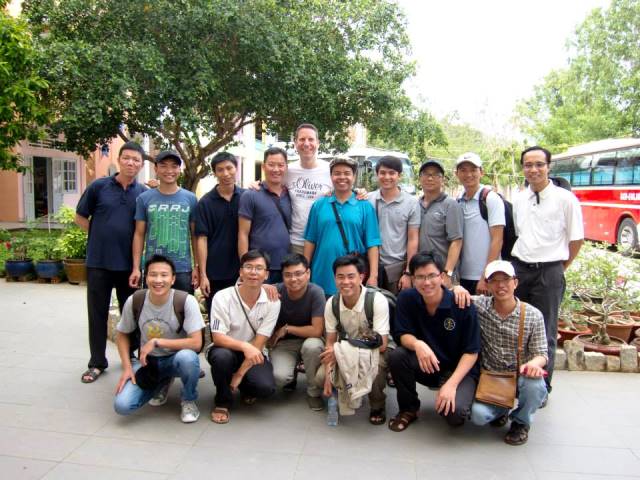
OUR LADY OF THE SACRED HEART! PRAY FOR US!
A blessing and happy anniversary to everyone!
Because of the pandemic that we cannot gather for this special celebration, thus each house will have mass in the house with the same intention of thanksgiving to God's grace and gratitude to the Province. And then each house may have a simple 'meal' together.
Once again, happy the foundation day of MSC in Vietnam
In Jesus' Heart!
Hoàng MSC
Congratulations, MSC 50 years ordained, Arthur Stidwill, Len Helm, Ed Travers, Terry Herbert and Laurie Bayliss (RIP, 2006).
Congratulations, MSC 50 years ordained, Arthur Stidwill, Len Helm, Ed Travers, Terry Herbert and Laurie Bayliss (RIP, 2006).
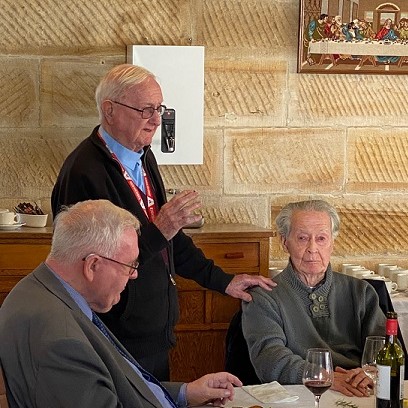
As mentioned yesterday, we are celebrating the Golden Jubilee of ordination of the first group from St Paul’s National Seminary for Late Vocations (1968-1998). Ed celebrated yesterday, August 13th. He was ordained by Bishop Bryan Gallagher, the Bishop of Port Pirie in his hometown of Cleve, country SA. He was ordained in the Town Hall as the newly built church was not big enough to accommodate all who wanted to attend. Later that evening when he stepped into the Agricultural Hall for the reception, the whole venue exploded in applause.
The others, were ordained in Sydney by Laurie’s uncle (of whom Laurie was more than proud), Cardinal Gilroy, and celebrate the day, August 21st.
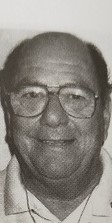
The jubilarians have served in a variety of ministries, Eastern Papua (Arthur), parishes (Len), Parishes and Spirituality (Ed), Colleges (Terry), Parish supply and chaplaincy (Laurie).
Terry made his novitiate in 1962, studied in Canberra and then worked in Education, joining the St Paul’s group in 1968. The others were part of a pioneer program of accompaniment with Frank Fletcher and made their novitiate with Bob Mitchell in 1967.
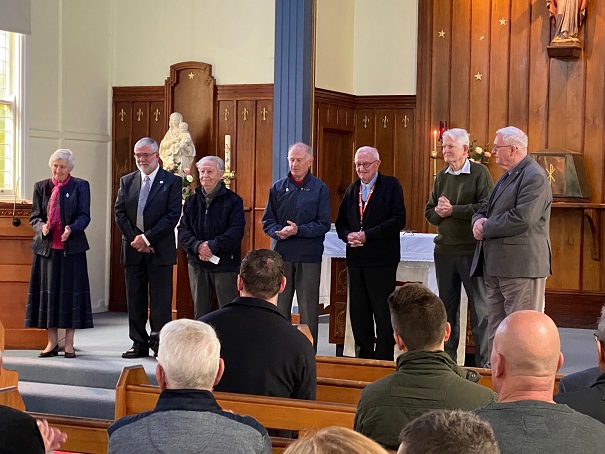
The Golden Jubilarians on the sanctuary at St Mary's Towers during the bonanza celebrations last June.
Golden Jubilees of the first priests from St Paul’s National Late Vocations Seminary.
Golden Jubilees of the first priests from St Paul’s National Late Vocations Seminary.

E.J. Cuskelly MSC, inaugural rector of St Paul's.
Tomorrow, we will acknowledge our MSC Golden Jubilarians, Arthur Stidwill, Len Helm, Ed Travers, Terry Herbert and the late Laurie Baylis.
This article appeared in the Canberra-Goulburn Archdiocese, Catholic Voice, written by Chris Gordon (who also has the photo credit)
Bishop Pat Power, editor of the book Late Call (2018) that tells the story of the 23 priests from the Canberra Goulburn Archdiocese ordained at St Paul’s Seminary in Kensington. Photo Chris Gordon.
Built in 1897, for years its Pyrmont sandstone walls stood at the centre of the Sacred Heart Monastery overlooking Kensington, both church and later school for local Catholics.
Today, that central building and those around it perform a range of functions, including use as a conference centre.
But for thirty shining years within the Monastery grounds operated a seminary for “older men,” an innovative idea at the time, giving men who received a late vocational call an opportunity to graduate in four years rather than the usual seven.
From 1968 until 1998, 281 priests were ordained at St Paul’s, 23 of them from the Canberra Goulburn Archdiocese.
“Twenty three of our best priests went through St Paul’s,” according to Emeritus Bishop Pat Power, editor of ‘Late Call’.
Bishop Power, a graduate of St Columba’s, Springwood and St Patrick’s, Manly, said he always had a great admiration for the 23 graduates of St Paul’s from this Archdiocese. For that reason he took on compiling the book as a labour of love to tell their stories.
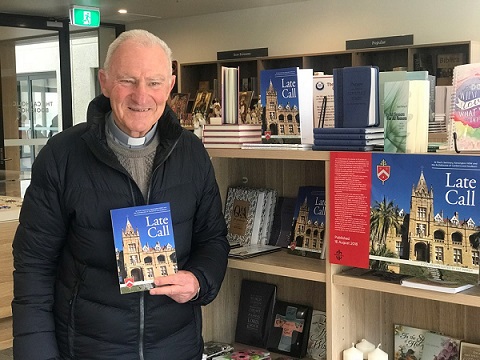
His fascination with St Paul’s, aside from his personal fondness for the place where he attended many bishop’s conferences, stems from the wide range of backgrounds the seminarians came from.
“It was a seminary for late vocations and it was started by the Missionaries of the Sacred Heart,” Bishop Power said.
“In those days it was at least a seven year course for the priesthood, and the Missionaries of the Sacred Heart were looking for a shorter course for some of their people who were interested in being Missionaries of the Sacred Heart,” Bishop Power said.
“So what St Paul’s offered was a four year course rather than a seven year course. From there it developed that some of the bishops were interested, and then the idea expanded to be a national seminary.”
The process of collating the book began last year for Bishop Power while attending the Archdiocesan retreat. He began reaching out to the former seminarians to see who was interested in the project and when there seemed sufficient interest, he got them to write a potted version of their stories (between 500 and 1000 words). Of the original 23, 17 are still living and others were sought to write for those who have already passed away.
“The stories themselves are simply written,” Bishop Power said.
“I found, when I sat down to read them, that the stories spoke for themselves in a way that touched my heart and I believe in a way that would speak lucidly to the readers of this book. They are just a nice collection of stories.”
Bishop Power points out that the reason that St Paul’s closed was related to the reason it opened in the first place. In 1968, the seven year requirement at traditional seminaries was rigid, but by 1998 there was more flexibility, accommodating late call seminarians as well.
Today, the buildings remain although few traces of the seminary do. New stories are being created and told around those old buildings, but with the help of this book, some of the old stories will now be remembered as well.
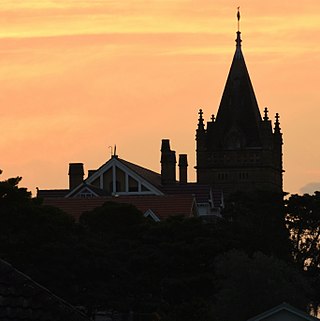
Part of the statement of closure: St Paul's National Seminary was opened in 1968 as a collaborative response of the Australian Catholic Bishops' Conference and the Missionaries of the Sacred Heart to the signs of those times regarding older men serving the Church as priests. St Paul's has been involved in adult education of the lay faithful, and more recently has offered a degree programme in theology.
We have reached a point in time, however, when there is no longer a need for a specialist Seminary to train older men for the priesthood and service in the Church. On the one hand, as was to be expected, the number of aspirants from this age group has diminished markedly over the years, and on the other hand, other Seminaries and Houses of Formation now take students of much more mature yearsthan they did before. Consequently, the Australian Catholic Bishops' Conference and the Missionaries of the Sacred Heart have decided to close St Paul's as the National Seminary for late vocations, at the end of 1998. This has been done with regret, but with trust in the providence of God, and with much satisfaction over what has been achieved at St Paul's.
Signed by Cardinal Edward Clancy of Sydney and Brian Gallagher MSC, the then Provincial.
Atheists and God cancellers
Atheists and God cancellers
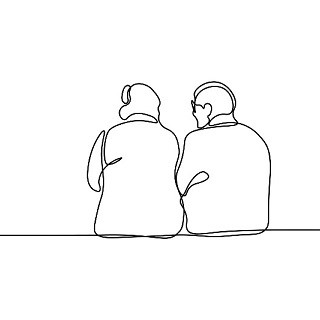
Here is a recommended article. In the context of the census and strong campaigns about responding to the question about religion, Eureka Street has published Michael McGirr’s reflection.
His distinction between atheists and god-cancellers is well worth noting.
If you would like to receive Eureka Street direct, free, to you inbox, details for subscribing can be found by Googling the Eureka Street website.
I must have time on my hands. I have been thinking about the difference between atheists and God cancellers. I love my atheist friends, of whom I am blessed with many. I relish the existential grist of our talks, the deep sense of substance and mutual respect. I also love the constant jokes. We keep each other honest. I enjoy a rich engagement with the history of thought and I believe we ennoble each other through the kind of trust that is prepared to talk about things that are off limits to others.
I call one of my dear atheist friends Mr Catheter. He is always taking the piss out of me. At the same time, he commiserates when my church kicks yet another own goal. For him, my pain is more significant than scoring points against an easy target. Our relationship reminds me a bit of Graham Greene’s Monsignor Quixote, a beautiful book.
Another atheist friend of mine sometimes asks me to light a candle for her. She has a tough life. She does not believe in prayer at all. But, as she tells me, she does believe in my belief, meaning she is comforted that I perform a little ritual in which I am at home on her behalf.
God cancellers are different. I know a few of them too. They use mockery more than humour, ridicule more than bemusement. They have a superior attitude, as if believers must surely be less intelligent than they are, unable to see what is blinking obvious to them. They suspect we are insensitive to the pain caused by our church communities, not realising how bad that pain feels from the inside when you live with it day in and day out.
They accuse us of having all the answers when that is not what God is about at all. God, for me, is the creative love that exists beyond all love and beyond all creation and, for that matter, beyond easy words. Not a pet rock that makes me feel better.
God cancellers, in my experience, are prone to accuse believers of their own intolerance and narrowness. They want us to go away.
May I offer a couple of comparisons to explain the difference, at least as I see it. Atheists, in my experience, often appreciate the beauty of sacred art and music. God cancellers, on the other hand, tend not to tolerate Christmas carols in public.
Atheists will acknowledge the good things done by religious communities, the hundreds and thousands of old and lonely people supported through the pandemic. God cancellers are irritated by any good news about church communities.

Atheists may ask about saying the Lord’s Prayer in parliament. This is a perfectly fair question, especially in an open society. Personally, I would not like to lose the Lord’s prayer until we can agree on an equally profound statement of existential humility and narrative of forgiveness. I very much appreciate the acknowledgement of country and think it should be on real estate contracts, as a matter of fact, where it might be more than symbolic. Does the prayer need to be Christian? Perhaps not. I happen to love the physical rhythm of Islamic prayer.
God cancellers, on the other hand, tend to want the religion question removed from the census. They want the census to be about the number of rooms in our houses and the level of our education. They see no need for us to be present to each other at a level deeper than that.
The religion question has plenty of room for people to be atheists or have no religion or not to answer. The days of people subscribing to the religion of their grandparents when it means little to them are long gone; I have not met anyone who has done this for years. We can all express whatever understanding we have worked hard to reach. Surely, we can embrace each other at that level without animosity. We are all struggling to make sense of our humanity. It is hardly a competition.
An MSC Kiribati story by Br Kaake Ioane MSC, a Brother's vocation
An MSC Kiribati story by Br Kaake Ioane MSC, a Brother's vocation
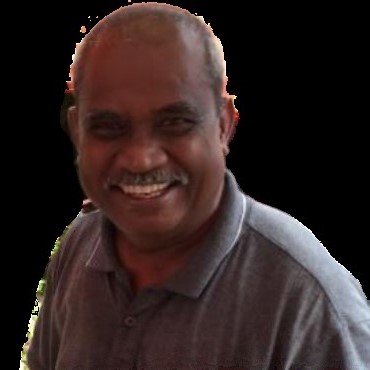
With acknowledgement to the Website of our new Pacific Province
Acknowledging the Past, Embracing the Present, and Welcoming the Future
I first came to know about the MSC in the 1970s. The MSC was the only Congregation in Kiribati at that time. We were encouraged to go and spend a weekend with the MSC community and then a one-year spiritual program in those days. Those who wished to continue after their spiritual year would move on to a two-year Novitiate program.
From 1970 to the 1980s, most of the members at that time were old Priests and Brothers. They came from France, Switzerland, Germany, and Australia. Most of them passed on in Kiribati, and some had returned to their home countries.
Between 1978 -1979, I decided to join the MSC as a volunteer, and later in the 1980s, I joined the MSC as a Religious Brother. The Novitiate in Kiribati began in 1981, and in 1982, I started my Novitiate formation. Before this year, most of our senior members would go to Papua New Guinea for their Novitiate and seminary studies.
Between 1980 and 1990, the Administration and Formation (Novitiate) were based in Kiribati. As time went on, there were many necessary changes and developments. The vocation increases from different parts of the Pacific Islands, the erection of the Pacific Union in 1988, and the relocation of the Administration and the Formation from Kiribati to Fiji were necessary changes.

By the year 2000, I learned that the Leadership Team in the Pacific Union became more localized than before. The challenges and responsibilities increased, additional plans and expectations were required, and more of our younger MSC members were deceased than before.
As a religious Brother, I had been assigned to different places with different challenges. Despite these challenges, I admitted that I had learned a lot from my mistakes and limitations. During the 1990s, I also learned the value of loving and caring while working with disabled children and adults at the Kiribati Red Cross.
Since 2006, presently I am in Fiji working with disadvantaged male youths. By daily living my three vows of obedience, chastity, and poverty, I am reminded and deeply connected in solidarity with those suffering from this Covid 19 pandemic:
Obedience: I must listen, obey, or follow the guidelines and protocols from the authorities to stop spreading the virus by wearing a mask and washing hands, avoiding nonessential gatherings, getting vaccinated, and staying home.
Chastity: I need to be more compassionate to those affected by this coronavirus and be more concerned for those frontline workers working hard during the day and night.
Poverty: I must share with those who have no jobs, no money, and no food. To care for those who have no family, friends, or home.
A Grand Adventure, by Sister Helen Warman OLSH, 60 years in Papua New Guinea, OLSH and MSC working together.
A Grand Adventure, by Sister Helen Warman OLSH, 60 years in Papua New Guinea, OLSH and MSC working together.

A Grand Adventure is a memoir written by Sister Helen Warman, an Australian the Daughters of Our Lady of the Sacred Heart. Sister Helen spent sixty years as an educator in Catholic missions to Papua New Guinea, primarily in Milne Bay Province (including the Trobriand Islands and Alotau) and in Port Moresby. Profits from sales will go to the "Back Door" outreach projects run by the OLSH convent in Boroko, Papua New Guinea.
We asked Sister Helen for an outline of those 60 years. She sent this outline of her ministry.
After completing my education from start to finish with then OLSH I entered at Hartzer Park in November 1953.
After profession I did my teacher training as a J.T at St. Edmunds Croydon Vic 1956 - 1958.

OLSH & AD (Handmaids of the Lord) Sisters Boroko
On 26th January 1959. I left for Daio Eastern Papua (now Milne Bay). Life really began!
I taught in various Primary Schools until 1972 when I went into Sacred Heart High School.
From 1976 - 1978 I was Catholic Education Secretary in the Diocese of Alotau. When this position was localised I became Christian Education Coordinator, visiting, by boat, our 42 Catholic Primary Schools on 14 scattered Islands. It was rough, wild and wonderful.
1984 I was transferred to Yule Island as Postulant Directress.

At Milne Bay. With ADs from Nimowa.
In 1990 I returned to Milne Bay to continue as CEC.
2002 to Moresby as Coordinator of a Formatirs Course at Xavier Institute.
2003 nation Christian Education Coordinator in National Education Office. Visited all 19 Dioceses for Workshops, annual Workshops for all Diocesan CES , CEC, another, with Paul Jennings, for Principals of Catholic Secondary Schools
Resigned after the end of 2009 and began weekly Literacy classes for adults.
Returned to Australia in 2019.

With the equivalent of the Governor.General. in Canada.
That with other things like a visit to the Holy Land, Canada and other lands, is my grand, amazingly wonderful life adventure. I marvel at all if has been even as I write this for you. Thanks .Helen.
Sister Helen continues her mission ministry via the MSC Mission Office regular video program, Mission Alive (check the Mission Office site – many past programs there).

Onto Another Chapter… Daniel Magadia MSC, Formation Reflection
Onto Another Chapter… Daniel Magadia MSC, Formation Reflection

One of the many insights I gained from my formation journey so far has been the importance of reflection, noticing the moments of growth, consolation, and even difficulty. As I dive into another semester of theological studies, I guess it is ideal for me to do that exercise again. Thanks, Peter Malone, for suggesting to type it out.
Might as well start by briefly reflecting on my time in novitiate last year. To use the analogy of a novel, the novitiate was a significant chapter of my journey as an MSC. I consider myself to be extremely privileged to be given that opportunity. The novitiate was a cherished time of entering deeper into the life, spirit, and mission of the congregation. It was also a year of growth and maturity in terms of how I understand myself, my prayer life, and my relationship with Jesus, the beloved son of God (an identity I share with Him).

Also, how lucky was I to be situated at Douglas Park during the peak of the COVID-19 pandemic. Detachment and isolation were already elements of that year, disregarding the virus. Fast forward to present, I am now professed, and have moved on to another chapter, another stage of this rollercoaster ride that is religious life.

Returning to Blackburn was coming back to a place that is familiar, but within an unfamiliar context. The Daniel (or Iyel) that once stayed here two years ago was different to the one who returned late January, as mentioned earlier. I may be residing in the same room as the pre-novitiate, but the surroundings, in some ways, are different. I have both old and new housemates. Of course, there is the “new normal” of the post-COVID world. But as Frank Dineen would often label the place, Cuskelly House is still paradise. By the way, it was good to resume to cooking for the community again. And goodness me, some of the Filipino ingredients I left two years ago are still in the pantry. Thankfully most of them are not out of date.
The big addition to post-novitiate life for me is studying Theology again. This is one of the things I was excited for since the finishing my time at Douglas Park. I have heard great things about YTU from confreres who either learned or taught there. Upon the entering the quaint but hallowed grounds of Yarra Theological Union, I was first captured by its tranquillity. It felt like entering a monastery, with its courtyard, which unsurprisingly has a sculpture of St Francis. It was at marvelling at the simplicity and beauty of the place where I was introduced to YTU’s mascots, the adorable guinea pigs. It is an environment conducive for learning.

As for the people that make YTU, there is a warmth, and sense of community among the lecturers and students. A notable quality is its diversity. I have classmates from across the globe, representing a variety of religious congregations. Last semester I was the lone MSC student; but this semester I am joined by my brother, Trieu Nguyen, who just finished his ELSPM course.
I did three units last semester, covering different fields of Theology. I found the classes fun and engaging, and I learned so much. I considered myself lucky that the last semester was not affected too much by the coronavirus, with all sessions face-to-face. Though I must confess, studying at Master’s level was intimidating, especially with their big assessments. It tested my energy, and my ability to stay organized and disciplined. The moments of insights, stress, and even procrastination, were opportunities for growth. It also tested my religious life, especially regarding prayer. To use another analogy, I was so used to juggling a certain number of clubs. The addition of another item meant returning to re-practicing juggling, and adapting to the new situation. I feel that I am more prepared for this second half of the year.

As for highlights, there are many. Some that are worth mentioning include the many walks through parklands to class, witnessing the final professions and ordinations of schoolmates, cheering at the Brotherhood Cup, and finishing the last 4000-word essay for my lecturer and community leader, Philip Malone (which signified the end of the semester).
Aside from studying, this first half of 2021 was also occupied with pastoral work. One of my commitments this year is teaching Catechesis to children preparing for first reconciliation and communion. One definite fruit from this experience is a greater respect of primary school teachers.
Relating to past pastoral experiences, teaching is a continuation of this ongoing lesson on the importance of simply being. There were moments where I doubted myself. Am I just wasting the children’s time? That is why I am thankful of my confreres at home, who remind me of that valuable insight of presence before I drive off to Keysborough. Aside from that, being a Catechist has been fulfilling and fun. Looks like my experience in Antioch and youth ministry did come in handy, especially with games.
Another placement was briefly helping Geraldine Lee, and her ministry to people in housing commission, drug addicts, and those suffering from mental illness. There were moments that were confronting, but likewise it was also fulfilling. She has a drama ministry, which was amusing to take part in.
As I embark on this second half of 2021, I look forward to more memories, challenges, and discoveries, accompanied by the love and support, and the banter and laughter of my brother MSC’s. Bring it on!
Celebrating Mary MacKillop this weekend – and some MSC links
Celebrating Mary MacKillop this weekend – and some MSC links
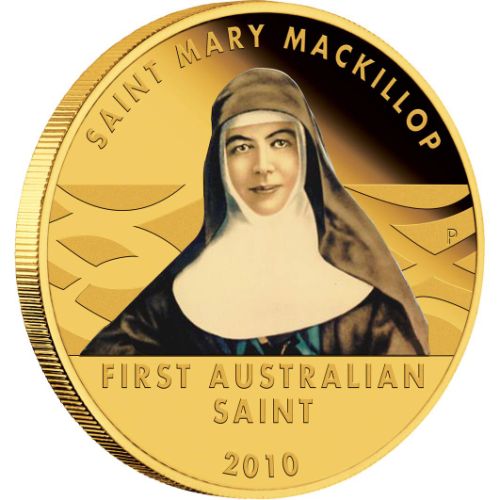
Sunday is the feast day of our saint, Mary MacKillop (1842-1909). Her congregation has the name and patronage of St Joseph – whose special year this is. There is also the naming of The Sacred Heart.
St Joseph is described in the liturgy as a wise and just man. Mary MacKillop’s congregation has shown a sense of justice responding to 19th century challenges, and the sisters continuing to take stances, act, commit themselves to the continuous emergence of justice issues. That is their wisdom.
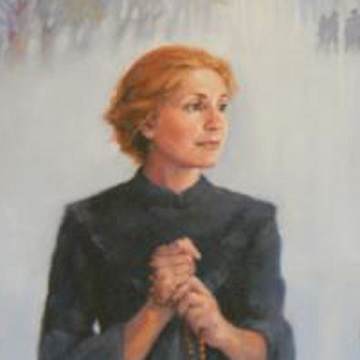
Fr Matthew Smith MSC was one of the priests who administered the last rites to St Mary.
Fr Paul Stenhouse MSC celebrated the daily morning Mass in the North Sydney chapel for many years during the 1960s and 1970s. MSC Priests also served with Mass supply for other communities like St Margaret’s in Darlinghurst.
Several MSC brothers and priests had sisters in the congregation, Brothers James McNamara, Terry Barry, Fathers John Burford, Frank Crilley. Fr Norbert Earl’s sister, Sister Denis, became Superior General in the 1960s. Today, Peter Carroll’s sister, Therese, has also been part of MSC groups, especially a consultant for aged care.
A Malone story of a grandaunt: Catherine Malone was born in Braidwood, NSW, in 1863. She met Mary MacKillop in 1881 and was invited to join the sisters, a friend of Mary, working in Josephite schools in New Zealand and Australia, dying at an advanced age in 1956. There is a postscript concerning the Madigan-Malone link. Mary Mackillop stayed at Philip Madigan’s hotel in Araluen on the southern NSW goldfields as did the sisters for nine months while the convent and school were built.
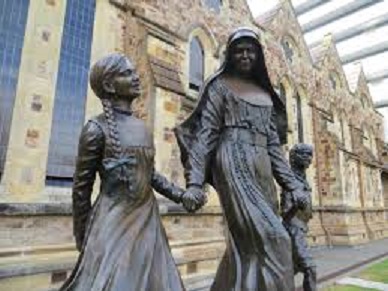
And a connection with the NT mission and community of Wadeye, Deacon Boniface Perdjert. Fr Brendan Reed, PP Deepdene, was present at the canonisation and notes: The Mass of Thanksgiving, on the day after the canonisation of Mary of the Cross, was celebrated with the inclusion of Aboriginal and Torres Strait Islander Australian Catholics. Members of the Aboriginal Community ceremoniously danced the gifts of bread and wine to the altar. The late Aboriginal Deacon Boniface Perdjert, from the Northern Territory, assisted at the Mass. And after the Mass, a group of Aboriginal Catholics prayed and sang over the burial place of the young Francis Xavier Conaci, the young Aboriginal man who had accompanied Father Salvado to Rome in the mid-nineteenth century.
Finally, we are still trying to solve the mystery of the cloth from 1866, the year of the foundation of the Sisters of St Joseph, held in the museum in Mount Street, North Sydney. It contains the Latin motto that Jules Chevalier, Founder of the Missionaries of the Sacred Heart from the later 1850s. Where did Mary MacKillop come across the motto, aged 24, founding the congregation, a motto in Latin from France? Fortuitous or a connection? No one has come up with a solution. We still hope.
August, First Friday, Chevalier Family intentions.
August, First Friday, Chevalier Family intentions.

In this August poster sent from the Chevalier Family Justice Committee, we are asked to name two people who inspired us with their environment-friendly mindset.
Whom would you name?
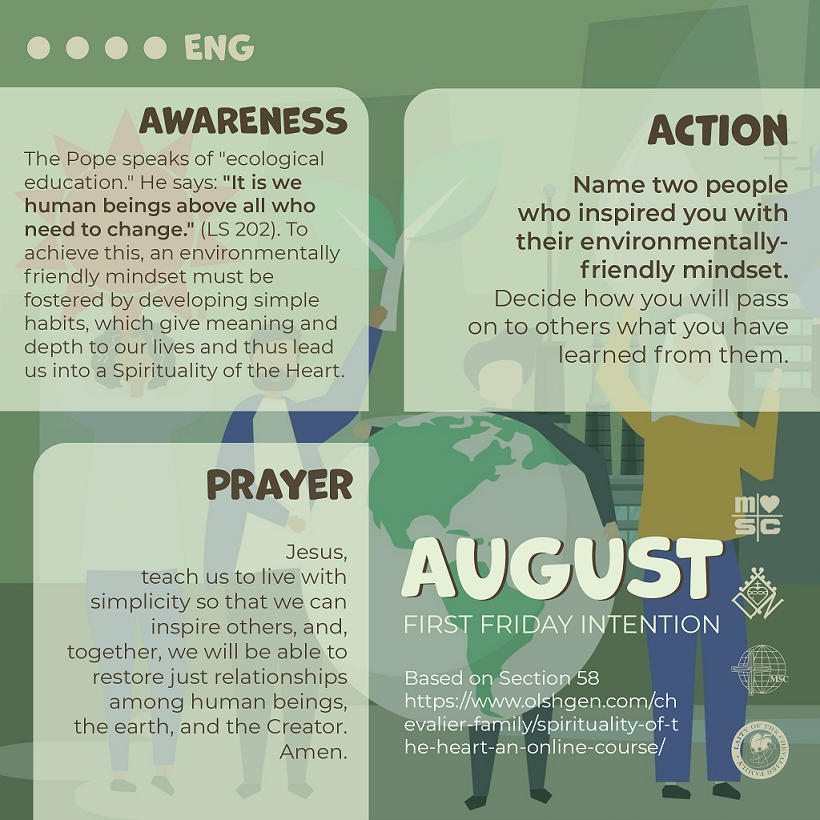
For us in the Pacific, we nominate: John Ribat MSC and Anote Tong of Kiribati.
- Cardinal John Ribat MSC, Archbishop of Port Moresby, has spoken often on this theme:
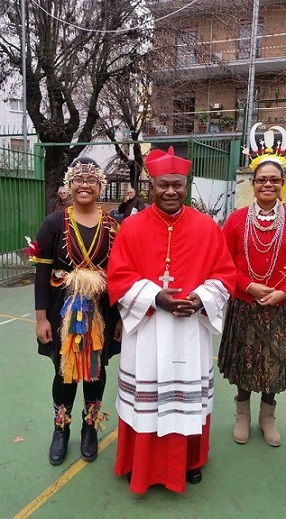
“The rising seas level across the Pacific – we are all affected by this.”
“In Europe and here in Australia you don’t see this affecting the lives of the people.
“But for us coming from many islands – Fiji, Samoa, Tonga, Kiribati, Tuvalu – we are seeing what the sea is doing … washing away good parts of our islands already.
“The first island that has to be evacuated … Carteret Island in Bougainville has been broken into three parts and is really disappearing.
“By 2050 most of the islands will be gone, and that is a great threat to us.
“The work of the Church is to make governments aware that we are responsible for our nation and the common good of our people.”
2. One of the significant heads of government who made representations at international meetings is Anote Tong, former President of Kiribati.

“The earth is not ours to do with as we please – we are merely trustees for future generations. We ignore this reality at our peril.”
“Our message is simple: if one of the world’s smallest, poorest and most geographically isolated countries can do it, so can you.”
